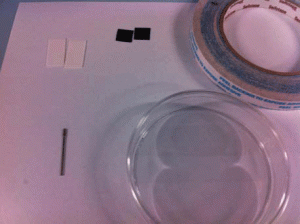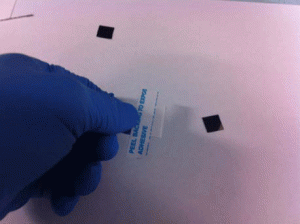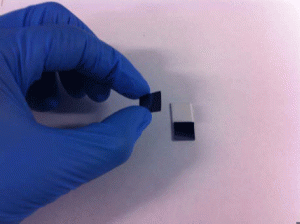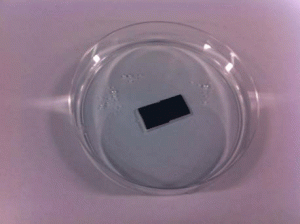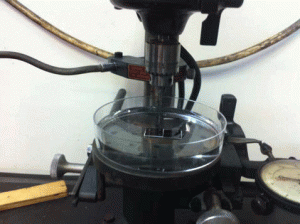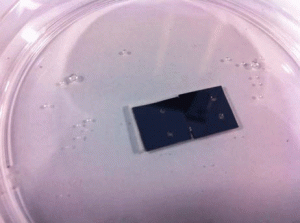R.J. Shilton, L. Y. Yeo, and J. R. Friend
MicroNanophysics Research Laboratory, Department of Mechanical and Aerospace Engineering, Monash University, Clayton, Victoria, 3800, Australia
Purpose
It is often necessary to form millimeter order holes in glass (and similar) substrates to form inlet or outlet ports in microfluidic devices. The easiest way to do this is to simply drill a hole in the required position, however owing to the brittle nature of most materials used in these devices, this can often lead to a high failure rate where the devices crack during the drilling process. Outlined here is a simple procedure for drilling ports in microfluidic devices, which has been tested with glass, silicon, and lithium niobate, with a very high success rate.
Materials
- ~ 1mm diamond drill bit (UKAM Industrial Superhard Tools, Valencia, CA)
- Drill press
- Double sided tape
- Disposable plastic petri dish
- Small piece of alumina (or other hard flat material)
- Substrate to drill ports into
Procedure
1. Attach microfluidic device to alumina with double sided tape. We have used this method reliably to drill ports in glass, silicon, and lithium niobate, however in principle it should work on a range of similar substrates. Silicon is shown in all images.
2. Stick alumina to bottom of petri dish with a small amount of double sided tape.
3. Fill petri dish with a generous amount of water to cool down the drill site, and to remove particles into the fluid while drilling the hole.
4. Attach diamond drill bit to drill press. We successfully used drill bits of diameter 0.75 and 1 mm, however others should work equally as well.
5. Drill at a high speed (~10,000 RPM). Quite a bit of force can be applied without cracking the substrate, as it is stuck to a rigid backing. Drilling through a 0.5 mm thick substrate should take about ten to fifteen seconds, if it is attached firmly.
What else should I know?
- Release the downward force a little near the hole exit, to avoid a rough hole on the other side.
- Keep device immersed in water after drilling until it is ready to be cleaned to avoid particles becoming stuck in device channels etc…
- Change water regularly to remove particle build up
MicroNanophysics Research Laboratory,
Department of Mechanical and Aerospace Engineering,
Monash University, Clayton, Victoria, 3800, Australia


